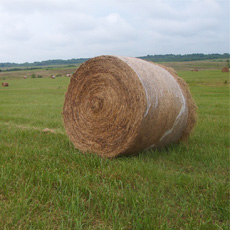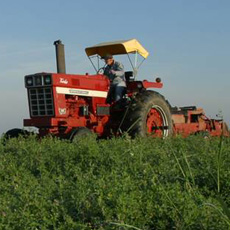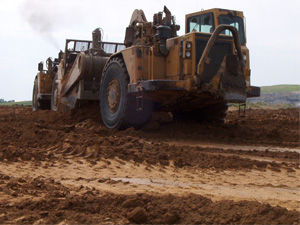The Indiana Soils/Prime Farmland Team formed in 1993 to foster a working relationship with the coal industry,  academia, farmers (producers), federal Office of Surface Mining (OSM) and governmental agencies with the idea of protecting fragile soil resources at coal mines. This was prompted by discussions between landowners and farmers managing reclaimed ground, coal producers mining and restoring disturbed areas, and State and federal program officials conducting field tests for productivity and bond release. From the collection of these different perspectives came opportunities. Experience verified that restored ground is as productive as pre-mining levels. And, success was improved with intensive and innovative land use management techniques. In addition, land users were learning that alternative means of soil replacement and greater attention to long term storage, maintenance and placement can have a positive impact on future land uses. Ultimately, it became evident that while reclaimed ground was meeting or even exceeding productivity standards, differing and even unique management practices were being applied to assist and meet those standards. To pursue and promote greater sharing of ideas and lessons learned the Soils Team was formed.
academia, farmers (producers), federal Office of Surface Mining (OSM) and governmental agencies with the idea of protecting fragile soil resources at coal mines. This was prompted by discussions between landowners and farmers managing reclaimed ground, coal producers mining and restoring disturbed areas, and State and federal program officials conducting field tests for productivity and bond release. From the collection of these different perspectives came opportunities. Experience verified that restored ground is as productive as pre-mining levels. And, success was improved with intensive and innovative land use management techniques. In addition, land users were learning that alternative means of soil replacement and greater attention to long term storage, maintenance and placement can have a positive impact on future land uses. Ultimately, it became evident that while reclaimed ground was meeting or even exceeding productivity standards, differing and even unique management practices were being applied to assist and meet those standards. To pursue and promote greater sharing of ideas and lessons learned the Soils Team was formed.
The Soils Team
First, the Soils Team created a statement to explain their purpose. Then they developed their goal.
Team Purpose Statement
- To develop and provide recommendations that ensure the protection, restoration and management of soil resources affected by coal mining in Indiana.
Team Goal
- To promote coordination among the various government agencies and other entities concerned with the maintenance of prime farmland and cropland-capable land resources.
To achieve this goal, the team developed two primary means of outreach and education. Those two methods are the use of publications and on-the-ground tours of mine sites.
Publications
One is professional publications explaining in plain language impacts of disturbing the land and then  putting it back in place. The Citizen's Guide to Land Reclamation offers an overview of the mining and restoration experience. Included are tips, recommendations and information on long term use and development of these disturbed lands that may be different from non-disturbed ground. The purpose is to introduce landowners to their rights and opportunities by exploring legal mandates of Indiana coal mining and reclamation laws; public participation opportunities and limitations; technical aspects of soil properties; soil handling, storage and replacement methodologies; post-mining land use options; and, the various requirements/opportunities guiding landowner decisions.
putting it back in place. The Citizen's Guide to Land Reclamation offers an overview of the mining and restoration experience. Included are tips, recommendations and information on long term use and development of these disturbed lands that may be different from non-disturbed ground. The purpose is to introduce landowners to their rights and opportunities by exploring legal mandates of Indiana coal mining and reclamation laws; public participation opportunities and limitations; technical aspects of soil properties; soil handling, storage and replacement methodologies; post-mining land use options; and, the various requirements/opportunities guiding landowner decisions.
Look for answers to some of these frequently asked questions:
- How do I know which operator I should allow to mine my land?
- How do I know that my land will be restored properly?
- Can I have my land put back differently than it is now?
- Who will reclaim my land if the operator does not finish the job?
- How long will it be before I get my land back for my own use?
A second Citizen’s Guide has since been developed, Farm Management Practices for Reclaimed Cropland. The purpose of this publication is to familiarize the shareholders, farmers, and landowners of reclaimed mined lands with the different aspects of farming these newly formed crop capable soils. The processes of mining and reclamation are discussed in this document to provide insight on why the management of reclaimed crop capable soils may be different from the undisturbed soils available before mining. This document describes management techniques and available resources such as technical  assistance as they apply to reclaimed crop capable soils. This document can also be used by landowners that are considering whether or not to lease their property for mining. Reclaimed crop capable soils have been proven to be as productive as unmined cropland. In fact, it is a requirement of the mining regulations that reclaimed crop capable soil obtains yields representative of its pre-mining productivity. Management techniques and maintenance of these reclaimed areas can vary and require additional monitoring. Water and sediment control structures that may not have been needed prior to mining are sometimes required after mining to obtain optimum management of restored crop capable soils.
assistance as they apply to reclaimed crop capable soils. This document can also be used by landowners that are considering whether or not to lease their property for mining. Reclaimed crop capable soils have been proven to be as productive as unmined cropland. In fact, it is a requirement of the mining regulations that reclaimed crop capable soil obtains yields representative of its pre-mining productivity. Management techniques and maintenance of these reclaimed areas can vary and require additional monitoring. Water and sediment control structures that may not have been needed prior to mining are sometimes required after mining to obtain optimum management of restored crop capable soils.
This document will provide farmers and landowners with the most current information and best management practices needed to obtain the highest possible yields from their restored crop capable soils and maintain the inherent value of the land.
Site Tours
Soil Team members also thought an on-the-ground tour of mine sites would also be useful and the Soils Field Day was devised. Begun in 1999, this biennial event features presentations, panel discussions and field demonstrations of the latest in technology, satellite imagery, soil amendments, cover crop alternatives, new machinery and more. The purpose is to bring interested users together for a day of two-way direct communication and hands-on learning.
Examples of Previous Field Day Agendas
